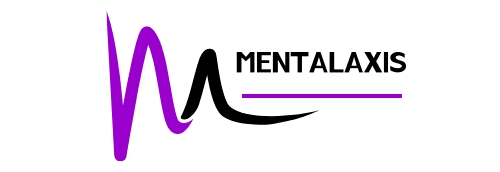How Can Biomechanical Analysis of Swing Enhance Performance in Pro Golfers?

In the realm of professional golf, where performance can be impacted by the minutest factors, understanding and improving the swing becomes paramount. From the moment a golfer picks up their club to the second they follow through after impact, each detail of the swing can influence the trajectory and distance of the ball. In this article, we’re going to delve into the science of the golf swing, specifically looking at how biomechanical analysis can significantly improve performance.
The Science of the Golf Swing
In order to understand how biomechanical analysis can aid performance, we must first understand the science behind the golf swing.
Lire également : What’s the Best Way to Implement Heat Acclimation Protocols for Desert Racing Drivers?
The golf swing is a complex motion that involves nearly every part of the body. The precise coordination of the torso, arms, and club during the downswing and upswing can substantially influence the quality of the shot. The swing can be dissected into five phases: the address, backswing, downswing, impact, and follow through. Each phase involves specific movements of the body and club.
The address involves the golfer positioning themselves in relation to the ball. A correct address sets the foundation for the rest of the swing.
Dans le meme genre : How Does Motor Cortex Stimulation Impact Skill Acquisition in Precision Shooting Sports?
The backswing is the portion of the swing where the golfer lifts the club from the address position to a point where the club is parallel to the ground. The backswing sets the stage for the “attack” on the ball.
The downswing is the phase where the golfer brings the club down towards the ball. This phase should be a mirror image of the backswing and is the most critical phase of the swing as it determines the ball’s trajectory.
Impact is when the clubface makes contact with the ball. The impact phase can determine the ball’s speed, spin, and direction.
Finally, the follow through is the end part of the swing, where the club continues its motion after impact. The follow-through can provide important feedback about the quality of the swing and the shot.
The Role of Biomechanical Analysis in Golf
Biomechanics is the science of human movement, and its application in sports aids in performance enhancement and injury prevention. In golf, biomechanical analysis can provide valuable data on the golfer’s swing.
Biomechanical analysis of the golf swing involves the use of high-speed cameras, force plates, and computer software to capture and analyze the golfer’s movement during the swing. The data collected can give insights into the golf swing’s intricacies, including body positions, force generation and transfer, and club trajectory.
The benefits of biomechanical analysis in golf extend beyond mere data collection. It can also facilitate improved swing technique and injury prevention. By identifying issues in the golfer’s swing mechanics, coaches can prescribe targeted exercises and drills to correct these problems and optimize performance.
The Impact of Biomechanical Swing Analysis on Performance
Biomechanical analysis of the golf swing can significantly enhance performance. With the precise data obtained from biomechanical analysis, golfers can make informed adjustments to their swing, leading to improved shot accuracy and distance.
For example, analysis can help golfers understand their body rotation during the swing. Many golfers struggle with over-rotation or under-rotation of the torso during the downswing, which can lead to inaccurate shots. By analyzing the golfer’s body movements, coaches can help golfers understand and correct these issues, leading to more consistent and accurate shots.
On the other hand, biomechanical analysis can also enhance club performance. Detailed data regarding the club’s path during the swing can help golfers optimize their club selection and swing technique.
Conclusion
In the high-stakes world of professional golf, every advantage counts. Through the biomechanical analysis of the golf swing, golfers can gain essential insights into their swing mechanics and make informed adjustments to enhance their performance. Whether it’s optimizing body rotation, improving club performance, or preventing injuries, the benefits of biomechanical analysis are clear. So, next time you watch a professional golfer make a seemingly effortless swing, remember there’s a lot of science and data behind that perfect shot.
Using Biomechanical Analysis to Optimize the Kinematic Sequence in Golf Swings
Biomechanical analysis in golf often focuses on optimizing the kinematic sequence. This sequence refers to the order in which different parts of the body contribute to the golf swing. The most efficient sequence typically starts with the lower body (hips and pelvis), followed by the upper torso, arms, and finally the club. Biomechanical analysis can help golfers understand and improve this kinetic chain, ultimately leading to enhanced performance.
In a well-optimized kinematic sequence, the pelvic rotational velocity peaks first, followed by the upper torso, arms, and then the club. This sequence allows for the transfer of energy from the larger body parts to the smaller ones, culminating in the highest velocity at the clubhead at impact. This energy transfer is critical in achieving the desired clubhead speed and ball distance.
Using motion capture technology, biomechanical analysis can gather detailed data on this sequence. It can provide insights into the timing, amplitude, and speed of each rotational component. Abnormal patterns, such as early peaking of rotational velocity in the upper torso or arms, can be identified and corrected. This detailed analysis can help both recreational golfers and professional golfers enhance their swing efficiency and increase clubhead speed.
Biomechanical analysis can also contribute to injury prevention in golf. An incorrect kinematic sequence can lead to excessive strain on certain body parts, resulting in pain and injuries. For example, early rotation of the upper body can put undue stress on the lower back, potentially causing low pain. By optimizing the kinematic sequence, golfers can not only improve their performance but also minimize the risk of injuries.
The Future of Biomechanical Analysis in Golf
The future of biomechanical analysis in golf looks promising. With advancements in technology, high-speed cameras and motion capture devices are becoming more accurate and accessible. As a result, more detailed and precise swing analysis will be possible, enabling golfers to fine-tune their technique like never before.
Research in the field of sports biomechanics is also growing. A quick look at scholarly resources like Google Scholar or Crossref reveals numerous studies on swing kinematics, rotational velocity, and other aspects of the golf swing. These studies not only contribute to our understanding of the golf swing but also provide valuable guidelines for performance enhancement.
Additionally, as more professional golfers turn to biomechanical analysis, its benefits become more apparent. Pros are breaking down the myth that golf is merely a game of intuition and skill; it is also a sport that requires a scientific understanding of movement and force. This shift in perception is likely to encourage more golfers to incorporate biomechanical analysis into their training, further boosting its popularity and application.
Conclusion
In conclusion, the biomechanical analysis of golf swings holds immense potential for performance enhancement. It provides a scientific approach to understanding and improving the golf swing, covering aspects from optimizing the kinematic sequence to preventing injuries. With advancements in technology and growing interest from professional golfers, its application is likely to increase in the future.
So remember, the next time you marvel at a professional golfer’s seemingly effortless swing, know that it is backed by extensive biomechanical analysis. It’s not just a swing; it’s a manifestation of science, precision, and data-driven training.
